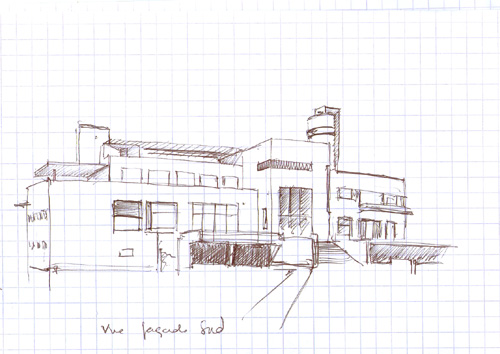In Robert Mallet-Stevens.
Living in Paris in the 20s did not simply mean living in the most beautiful city of the world near the Seine, the cafés or the Eiffel Tower. No, living in Paris in the 20s, was first and foremost about living in the capital for the arts, there where the great intellectuals of the century all of course mixed to talk of this and that around a glass of absinthe in the Bastille district, while the jargon of the Apaches resounded in the “rue de Lappe”.
Living in Paris in the 20s did not simply mean living in the most beautiful city of the world near the Seine, the cafés or the Eiffel Tower. No, living in Paris in the 20s, was first and foremost about living in the capital for the arts, there where the great intellectuals of the century all of course mixed to talk of this and that around a glass of absinthe in the Bastille district, while the jargon of the Apaches resounded in the “rue de Lappe”.
We are therefore completely about modernism, numerous writers come in
search of inspiration such as Scott Fitzgerald, the creator of the beloved
Gatsby. The artists Picasso, Braque and Matisse read in whispers the Dada
manifesto written very recently by Tristan Tzara or the books by André Gide,
who became the literary thinker for this movement. Everyone is a nonconformist,
completely rejecting the rules and established critera to create something new
with total freedom, just like Robert Mallet-Steven did.
It covers everything, wildly opposed to the Academy of Arts, a sign also
for films sets (Le vertige by Marcel l’Herbier) at the times of shop windows ((to
just quote Bally). But it is in this very posh district, now the 16th district,
that the architect will leave his most beautiful landmark, the “rue Mallet
Stevens”.
This group of five houses built between 1926 and 1927, from the number 9
to 12 is one of the works symbolic of the modernist movement. Its volumes were
lined with terraces and the structure of the concrete fronts, his material of
preference, gives every apartment an individual identity. A work esteemed in
particular by the bourgeoisie who offered him, thanks to a multitude of private
orders throughout his career, long-lasting and well-deserved success.











Aucun commentaire:
Enregistrer un commentaire